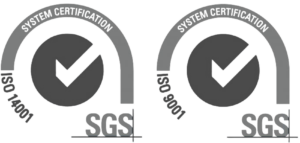Specifications
Below is an explanation of the various product specifications used by De Ploeg.
Flame retardant
De Ploeg fabrics are tested for flame retardancy according to the standards used in different countries: BS 5867 (Great Britain), DIN 4102 (Germany), NF 92 507 (France), ISO 6940 (Netherlands), ISO 6941 (Netherlands).
Weight
Weight in grams per linear meter.
Light fastness
Discolouration under the influence of sunlight. The degree of discolouration is expressed in a number between 1 and 8 on the blue scale, where 1 indicates the lowest lightfastness and 8 the highest lightfastness. A lightfastness of 6 means in practice that the fabric may show slight discolouration after about 2 years (provided it is not exposed to direct sunlight). De Ploeg uses a lightfastness of 5 as its standard, and we strive for a lightfastness of 6.
Shrinkage
We indicate the shrinkage after washing or dry-cleaning on the sample material, together with the recommended cleaning method.
Martindale
Wear resistance, the higher the number of Martindale revolutions, the stronger the fabric.
Decorative use < 6,000 revolutions
Normal use > 20,000 revs
Intensive use > 30,000 revs
Very intensive use > 40,000 revs
Seam and shear resistance
De Ploeg tests upholstery fabrics for sensitivity to ‘open’ stitching. In general, it can be said that a fabric of which the fabric threads move a maximum of 6 mm from each other, at 180 NM load, will not cause any problems in practice. If the sliding resistance is less, it is advisable to upholster extra carefully by using double stitching and locking the sides.
Maintenance
See washing instructions.
Pilling
Is the surface twisting of protruding fibres into small balls. The extent to which a fabric tends to pile depends on the raw material and yarn composition. Pilling sensitivity is indicated by a number between 1 and 5. Here, 1 is a very strong pilling and 5 is no pilling.
